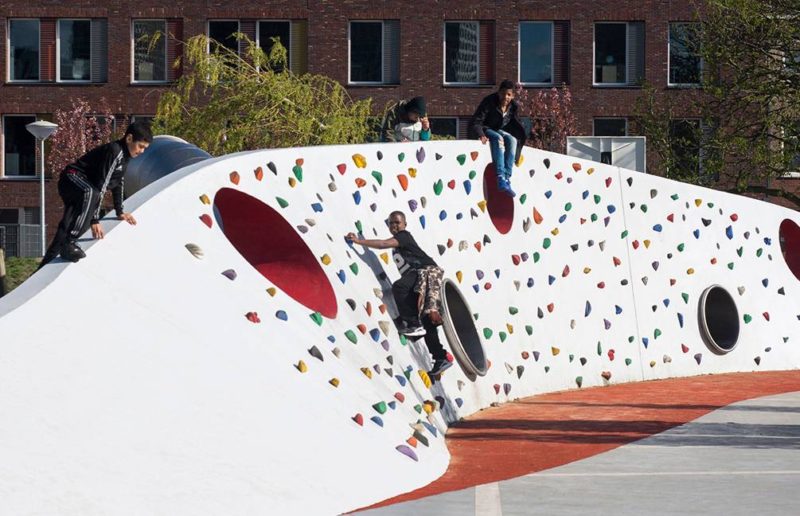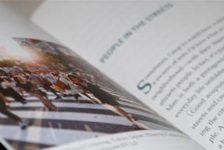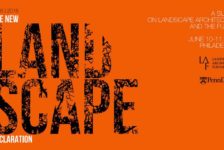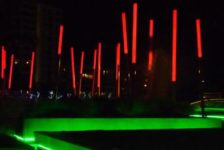Article Bhanu Mahajan – Into the Wild shows us landscapes designed for children, by Openfabric and DMAU, in Grevelingenveld, The Hague (Netherlands) Outdoor play is about an experience, skills, health, stamina and everything else that is part of a kid’s development. But why outdoors and not indoors? While formal sporting activities strengthen them physically, playing in the wild/natural settings nurtures their creativity. But what to play, and how? The formal, hard play courts are generally the sole landscapes designed for children to try their hand in outdoor activities, and most of these activities are related to pre-structured sports, right? But what to play, and how? The formal, hard play courts are generally the sole landscapes designed for children to try their hand in outdoor activities, and most of these activities are related to pre-structured sports, right?
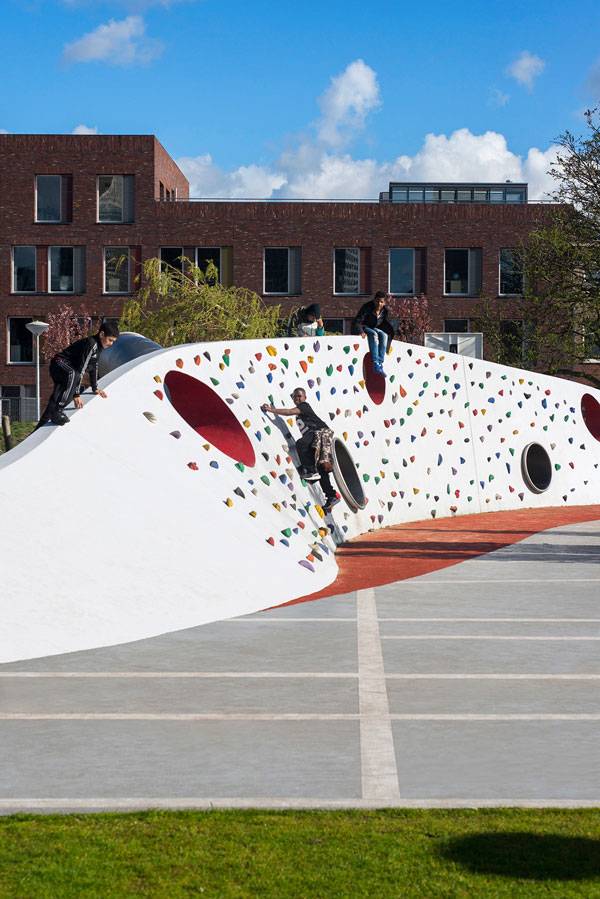
Into The Wild. Photo courtesy of Openfabric and DMAU
But are the conventional play areas, with courts and lawn patches, enough to foster kids’ all-around development? The absence of nature is so profound in the modern day child development curricula that the experience of playing in the natural world is somehow lost, and the importance of it is ignored. Here designers, and planners too are the stakeholders, as they conceive of open spaces as neighborhood parks with greenery and walkways, and seldom think about the kids’ play area.
Landscapes Designed For Children
So how should a play area be designed?
An answer to that can be found in the ‘Into the Wild’ project by ‘Openfabric’. The project is about a bold transition of a boring playground into an interactive and experience-based play area.

Into The Wild. Photo courtesy of Openfabric and DMAU
The Grevelingenveld, known locally as Deltaplantsoen, is a neighborhood square, developed in 5100 sq.mt., in Rivierenbuurt, The Hague, which initially had a set of courts with some scattered seating areas and green patches. With the development of a new neighborhood school facing onto the square, it lacked a touch of nature and the freedom to define play space ourselves. Preschoolers learn much through their senses. Keeping this in mind, the design concept is to juxtapose both concepts of playing; a formal sports court on the outside and a wild, interactive play zone at the center. This value addition is significant to the aesthetics and functions of the same space.
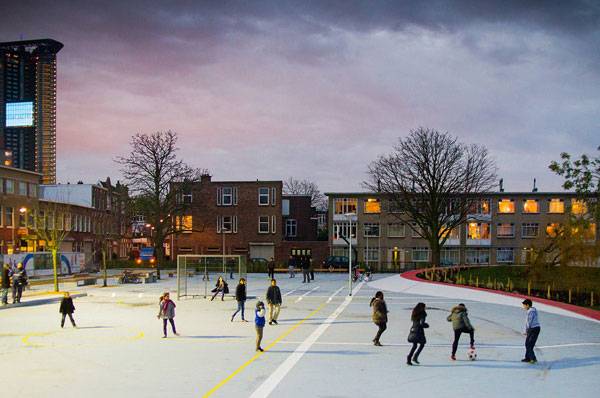
Into The Wild. Photo courtesy of Openfabric and DMAU
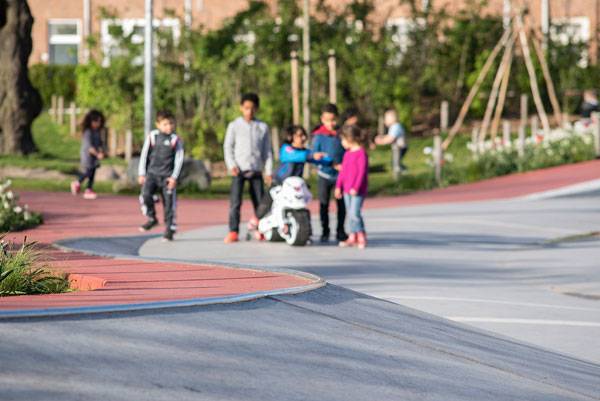
Into The Wild. Photo courtesy of Openfabric and DMAU
An urban exterior contains standard-sized play courts and structured order games and a natural interior where, with their own perception of a play-scape, users are free to design, build or destruct play spaces using natural materials, fast-growing plants and tree logs. The earlier playground was mono-functional which offered neither the diversity nor the dynamism of the new space, nor did it allow for the different play choices and preferences of different age groups. Especially for the lower age group children, there wasn’t any space to show their creative instincts in this formal playground.
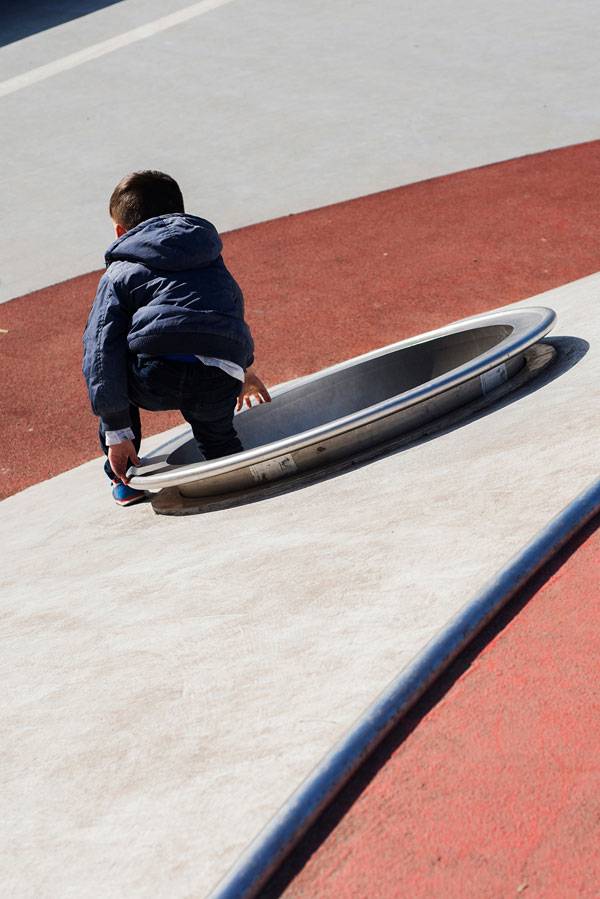
Into The Wild. Photo courtesy of Openfabric and DMAU
Urban Gone ‘Wild’
With this new arrangement of the same space, the ‘Into the Wild’ project has a diverse range of different kinds of playing activities. The exterior formal court is defined by painted lines, forming standard-sized courts, and the intermingling of some other colorful straight lines, without any specific order and which can be interpreted as an abstract pattern, also offers endless possibilities for children to interpret and imagine their own space through their own perceptions.

Into The Wild. Photo courtesy of Openfabric and DMAU
The central play area, formed by an undulating landscape, is the most innovative part of the project, which contains native plants and natural materials, sand pits, tree trunk bridges, tunnels, and slides. Isn’t it inviting and tempting for the children to re-explore the new functions of this play space, which was boring and mono-functional, earlier? To add to this is a curvilinear wall separating the playscape and the outer court area, called the ‘Ribbon’, which, according to the designers, is the ‘threshold between the urban and the natural’.
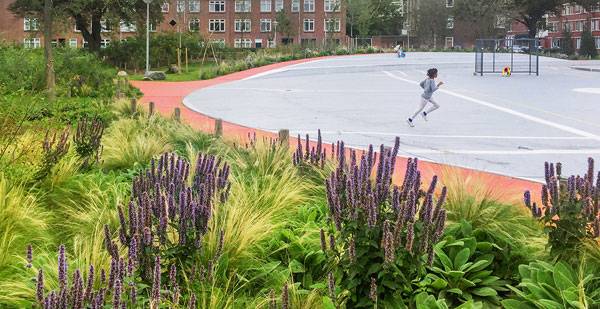
Into The Wild. Photo courtesy of Openfabric and DMAU
It has all the traditional playground equipment and the top surface of it can also be used as seating for the spectators watching the sports. Sand art, hide and seek, treasure hunts, tagging, and digging, along with cycling, wall climbing, skating, all intermingle together with slides and tunnels to provide a richer experience which was lacking in the previous layout. Because the natural world is filled with beautiful sights, sounds, and textures, it’s the perfect resource for the development of aesthetics and ability of place finding in young children. The space, as a whole, helps to master emerging physical skills and building blocks of life.

Into The Wild. Photo courtesy of Openfabric and DMAU
Sustainability is not only about preserving the environment, but also about feeling an increase in sensitivity. The beauty of the natural world around the children increases aesthetic awareness, which can heighten care and love for nature among kids.

Into The Wild. Photo courtesy of Openfabric and DMAU
This heightened sensitivity is crucial to achieving sustainability of our natural environment, about which they are generally taught in schools. Because playing outdoors gives them a chance to connect with nature and get sensory experience from the activities and games by learning through movement, this project truly shows the way forward to achieve ‘Sustainability’ in its true sense by bringing kids into direct contact with nature. This project is crucial to the well-being and creative instincts of kids and their sensory perception. The rich, interactive and first-hand ‘Wild’ experience in the ‘Into the Wild’ project is unmatched. And kids, no doubt, love it.
What is the role of landscape design in children’s overall development?
CLICK TO COMMENT
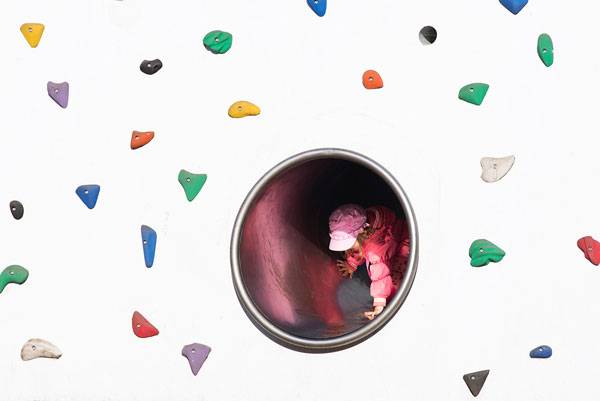
Into The Wild. Photo courtesy of Openfabric and DMAU
Full Project Credits For Into the Wild:
Project Name: Into the Wild Architects: Openfabric, Dmau Website: http://www.openfabric.eu/, http://dmau.com/ Contact e-mail: open@openfabric.eu Project location: Grevelingenveld, The Hague (Netherlands) Completion lear: 2015 Gross Built Area (square meters or square foot): 5.100 sqm Photo credits: Jacopo Gennari Feslikenian, Daryl Mulvihill, Francesco Garofalo Other participants (eg. collaborators, clients, consultants, etc): Team: Francesco Garofalo, Daryl Mulvihill, Barbara Costantino. Client: The Hague Municipality, Richard Krajicek Foundation Consultant: Arcadis Recommended Reading:
Article by Cristina Ferrara
Published in Blog












